[caption id="attachment_236399" align="aligncenter" width="1785"]

© Denny Medley | USATSI[/caption]
Over the course of the last few weeks and especially the last few days, there hasn’t been a hotter topic in all of college basketball than the simple question of “What’s wrong with Kentucky?”
Assuming of course that you think something is “wrong” with the youngest team in college basketball “only” sitting at 17-6, than the answer to the question essentially boils down to one simple topic: Recruiting. Some believe that Kentucky needs to stop recruiting “one and done” players altogether, while some point to the fact that over the last couple years they haven’t gotten the best one and done players (something I disagree with and will argue about later on). Virtually everyone agrees that Kentucky is simply too young, and needs to recruit more three and four-year college players like the Virginia’s and Villanova’s of the world do.
But while the idea of recruiting more three and four year players sounds great on paper, for a school like Kentucky, it’s actually harder than most realize. Which is why I’m writing today: Because I believe Kentucky’s biggest problem is one that no one is talking about. It’s not that Kentucky hasn’t recruited three and four year college players (think Marcus Lee, Isaac Humphries and Charles Matthews). Kentucky’s actual problem is, how do you get them to stay on campus, when they have no idea what their role will be two or three years down the road? In essence, how do you successfully recruit three and four year college players, when you may – in any given year – recruit over them with a great one and done player?
Before we get into that, I want to start by dispelling a very dumb myth: Despite what people are saying, no, John Calipari has not “lost his recruiting touch.” While all the focus is on Calipari missing on the big names in recent years (Zion Williamson, R.J. Barrett, Marvin Bagley), it’s not like he didn’t miss out on big names early in his career (think Shabazz Muhammad, Jaylen Brown and Emmanuel Mudiay) when he was the unquestioned best recruiter in college basketball. Also it’s not like Cal is scraping at the bottom of the barrel either. For all the talk about Cal “losing his touch” the current Kentucky freshman class includes six of the Top 25 recruits in last year’s class. Six!!! Not to mention that in addition to those six players, Kentucky was also
thiiiiiiiiiiis close to getting Trae Young and Mo Bamba as part of this class as well. Can you imagine that?
Therefore, the issue (at least in my mind) isn’t really about the freshmen, but the players behind them. As we learned with Duke’s loss to St. John’s this weekend, even the best freshmen are going to have off-nights. They’re also going to have games where they face a fearless, hungry team and take a loss. It happens to Duke and it happens to Kentucky too. And it will continue to happen to any school that is overly reliant on freshmen.
Therefore, as nice as star freshmen are, you need some older veteran guys too, the ones who stay calm and handle adversity, and who also show up each and every night. Kentucky has just a hint of that with Wenyen Gabriel and to a smaller degree Sacha Killeya-Jones, but clearly not enough. To use John Calipari’s words, they don’t have enough “fight” when the going gets tough. More than more talent, they need guys who have been there before, who will come out focused every game and won’t flinch when adversity hits. You know who Kentucky needed on Saturday at Missouri? It wasn’t Trae Young or another superstar freshman. In my mind, they needed Charles Matthews.
It might sound insane, but hear me out.
To backtrack (for those who have forgotten) Matthews is a former Kentucky player who came in with the same recruiting class as Jamal Murray, Isaiah Briscoe and Isaac Humphries two seasons ago. But after barely playing his freshman year, he elected to leave and transfer to Michigan. After sitting out last year he is now the Wolverines leading scorer at over 14 points per game, and is also averaging five boards, three assists and a steal and block per game. He’s the kind of tough, powerful, mature (keyword there) guard, who can simply overwhelm undersized opponents.
Now granted, even if Matthews were at Kentucky, it’s not as though all their problems would be solved. I’m not arguing they’d be undefeated or ranked in the Top 5 with him on the roster. But at the same time Matthews would be a pretty darn nice piece to have in the starting lineup alongside Shai Gilgeous-Alexander and Kevin Knox in the backcourt. And with all due respect, it feels almost certain that he’d give the Wildcats more consistent play than Hamidou Diallo has this season. Understand, that’s not a knock on Diallo. Just that he’s a young player on a young team who is being asked to do too much.
Of course that’s all just fantasy, since Matthews isn’t with this team. Neither is Briscoe or Humphries, two classmates who came in with Matthews but decided to turn pro and are both playing overseas right now. I’ve also got to wonder how much those guys would help this young team too. For all the headaches Briscoe reportedly gave Coach Cal behind the scenes, he was a relatively steady guard who could be doing big things for this year’s team. Humphries still might not be starting had he returned this year, but also just seemed to be getting comfortable in Lexington when he decided to leave. Remember, he played arguably his best game as a Wildcat in that Elite Eight loss to North Carolina last March.
Yet instead of being in Lexington for their junior seasons, all three elected to leave Kentucky. And while each had their own individual reason for the decision, it all likely boiled down to the fact that they didn’t want to return to Lexington not knowing what their role would be. In most programs, players get more playing time and minutes the longer they stay in the program. But that’s no guaranteed at Kentucky, where in any given year you might get jumped by an incoming, superstar freshman.
And ultimately, that is the biggest problem to me with both Kentucky now and going forward in the future: How do you recruit three and four-year guys, when they have no idea what the roster will look like, or what their role will be, season to season?
Now look I know what a lot of you are thinking: “But Aaron, Virginia and Villanova are able to recruit three and four-year guys and there are never any issues. Kentucky needs to do that too! It really isn’t that hard. Just take a few guys that aren’t Top 10 or even Top 15 prospects, let them sit on the bench and develop for a season or two and they’ll be fine.”
But while that sounds good, it isn’t so simple. To use Virginia and Villanova as an example, they can recruit three and four-year guys and tell them “look, if you just follow our plan, you’ll be starting by the time you’re a junior.” Kentucky can’t. Because Kentucky has no idea who they will be recruiting by the time that player is a junior or senior. Virginia and Villanova on the other hand might not know the exact names of the players who will be on the roster two or three years down the road, but they know what kind of guys they’ll be recruiting. Those “kind of guys” are two, three and four year players who will need time to develop. Just like the players who come in before them.
At Kentucky though? Well, it’s a whole other ball-game. One year, they might recruit a dynamic, program-changing point guard like John Wall. The next year, they might miss on one altogether, but bring in two dynamic wings, or a wing and post-player. Then the next year, it’s back to the star point guard, and the following year, they’ll have a dominant low-post star like Anthony Davis. See why that might be confusing to a four-year recruit? Not only do they have no idea who they’ll be playing with. They don’t even know the style they’ll be playing. To take Matthews as an example, he could very well be the star of this year’s team. But there’s no guarantee it’d be the same next year.
(For the record, this is also something that’s quickly becoming an issue at Duke. While everyone is focused on the stars like Marvin Bagley and Grayson Allen, the thing no one is talking about is that the Blue Devils have absolutely no bench. Over the last couple years, older players who should be occupying those spots like Derryck Thornton and Chase Jeter have transferred (they’re now at USC and Arizona respectively) because they have no idea how their role will change season to season. Duke also just lost another freshman named Jordan Tucker, who transferred to Butler for the same reason. And you know what’s happened because of it? Duke has no bench. They got just six total bench minutes against Virginia (six!) and former walk-on Justin Robinson has seen major playing time this year)
But back to Kentucky, because the sad part is, I don’t know what the answer is to this problem. I can’t imagine John Calipari is going to all of a sudden stop recruiting one and done kids altogether. After all, he’s always recruited the “best of the best” (dating back to his Memphis days). Plus, if a Zion Williamson or Mo Bamba is interested in Kentucky, it’s not like Calipari can or should say “no thanks.” No coach in America would.
At the same time, it’s something that John Calipari does in fact need to get figured out.
It’s something that has hurt his program this season. And will only continue to hurt it, until he finds a solution.
Aaron Torres is covering basketball for KSR this season after four years at Fox Sports. Follow him on Twitter @Aaron_Torres on Facebook or e-mail at [email protected]. He is also the author of the only book written on the Calipari era, “One and Fun: A Behind the Scenes Look at John Calipari and the 2010 Kentucky Wildcats.”
[mobile_ad]
 © Denny Medley | USATSI[/caption]
Over the course of the last few weeks and especially the last few days, there hasn’t been a hotter topic in all of college basketball than the simple question of “What’s wrong with Kentucky?”
Assuming of course that you think something is “wrong” with the youngest team in college basketball “only” sitting at 17-6, than the answer to the question essentially boils down to one simple topic: Recruiting. Some believe that Kentucky needs to stop recruiting “one and done” players altogether, while some point to the fact that over the last couple years they haven’t gotten the best one and done players (something I disagree with and will argue about later on). Virtually everyone agrees that Kentucky is simply too young, and needs to recruit more three and four-year college players like the Virginia’s and Villanova’s of the world do.
But while the idea of recruiting more three and four year players sounds great on paper, for a school like Kentucky, it’s actually harder than most realize. Which is why I’m writing today: Because I believe Kentucky’s biggest problem is one that no one is talking about. It’s not that Kentucky hasn’t recruited three and four year college players (think Marcus Lee, Isaac Humphries and Charles Matthews). Kentucky’s actual problem is, how do you get them to stay on campus, when they have no idea what their role will be two or three years down the road? In essence, how do you successfully recruit three and four year college players, when you may – in any given year – recruit over them with a great one and done player?
Before we get into that, I want to start by dispelling a very dumb myth: Despite what people are saying, no, John Calipari has not “lost his recruiting touch.” While all the focus is on Calipari missing on the big names in recent years (Zion Williamson, R.J. Barrett, Marvin Bagley), it’s not like he didn’t miss out on big names early in his career (think Shabazz Muhammad, Jaylen Brown and Emmanuel Mudiay) when he was the unquestioned best recruiter in college basketball. Also it’s not like Cal is scraping at the bottom of the barrel either. For all the talk about Cal “losing his touch” the current Kentucky freshman class includes six of the Top 25 recruits in last year’s class. Six!!! Not to mention that in addition to those six players, Kentucky was also thiiiiiiiiiiis close to getting Trae Young and Mo Bamba as part of this class as well. Can you imagine that?
Therefore, the issue (at least in my mind) isn’t really about the freshmen, but the players behind them. As we learned with Duke’s loss to St. John’s this weekend, even the best freshmen are going to have off-nights. They’re also going to have games where they face a fearless, hungry team and take a loss. It happens to Duke and it happens to Kentucky too. And it will continue to happen to any school that is overly reliant on freshmen.
Therefore, as nice as star freshmen are, you need some older veteran guys too, the ones who stay calm and handle adversity, and who also show up each and every night. Kentucky has just a hint of that with Wenyen Gabriel and to a smaller degree Sacha Killeya-Jones, but clearly not enough. To use John Calipari’s words, they don’t have enough “fight” when the going gets tough. More than more talent, they need guys who have been there before, who will come out focused every game and won’t flinch when adversity hits. You know who Kentucky needed on Saturday at Missouri? It wasn’t Trae Young or another superstar freshman. In my mind, they needed Charles Matthews.
It might sound insane, but hear me out.
To backtrack (for those who have forgotten) Matthews is a former Kentucky player who came in with the same recruiting class as Jamal Murray, Isaiah Briscoe and Isaac Humphries two seasons ago. But after barely playing his freshman year, he elected to leave and transfer to Michigan. After sitting out last year he is now the Wolverines leading scorer at over 14 points per game, and is also averaging five boards, three assists and a steal and block per game. He’s the kind of tough, powerful, mature (keyword there) guard, who can simply overwhelm undersized opponents.
Now granted, even if Matthews were at Kentucky, it’s not as though all their problems would be solved. I’m not arguing they’d be undefeated or ranked in the Top 5 with him on the roster. But at the same time Matthews would be a pretty darn nice piece to have in the starting lineup alongside Shai Gilgeous-Alexander and Kevin Knox in the backcourt. And with all due respect, it feels almost certain that he’d give the Wildcats more consistent play than Hamidou Diallo has this season. Understand, that’s not a knock on Diallo. Just that he’s a young player on a young team who is being asked to do too much.
Of course that’s all just fantasy, since Matthews isn’t with this team. Neither is Briscoe or Humphries, two classmates who came in with Matthews but decided to turn pro and are both playing overseas right now. I’ve also got to wonder how much those guys would help this young team too. For all the headaches Briscoe reportedly gave Coach Cal behind the scenes, he was a relatively steady guard who could be doing big things for this year’s team. Humphries still might not be starting had he returned this year, but also just seemed to be getting comfortable in Lexington when he decided to leave. Remember, he played arguably his best game as a Wildcat in that Elite Eight loss to North Carolina last March.
Yet instead of being in Lexington for their junior seasons, all three elected to leave Kentucky. And while each had their own individual reason for the decision, it all likely boiled down to the fact that they didn’t want to return to Lexington not knowing what their role would be. In most programs, players get more playing time and minutes the longer they stay in the program. But that’s no guaranteed at Kentucky, where in any given year you might get jumped by an incoming, superstar freshman.
And ultimately, that is the biggest problem to me with both Kentucky now and going forward in the future: How do you recruit three and four-year guys, when they have no idea what the roster will look like, or what their role will be, season to season?
Now look I know what a lot of you are thinking: “But Aaron, Virginia and Villanova are able to recruit three and four-year guys and there are never any issues. Kentucky needs to do that too! It really isn’t that hard. Just take a few guys that aren’t Top 10 or even Top 15 prospects, let them sit on the bench and develop for a season or two and they’ll be fine.”
But while that sounds good, it isn’t so simple. To use Virginia and Villanova as an example, they can recruit three and four-year guys and tell them “look, if you just follow our plan, you’ll be starting by the time you’re a junior.” Kentucky can’t. Because Kentucky has no idea who they will be recruiting by the time that player is a junior or senior. Virginia and Villanova on the other hand might not know the exact names of the players who will be on the roster two or three years down the road, but they know what kind of guys they’ll be recruiting. Those “kind of guys” are two, three and four year players who will need time to develop. Just like the players who come in before them.
At Kentucky though? Well, it’s a whole other ball-game. One year, they might recruit a dynamic, program-changing point guard like John Wall. The next year, they might miss on one altogether, but bring in two dynamic wings, or a wing and post-player. Then the next year, it’s back to the star point guard, and the following year, they’ll have a dominant low-post star like Anthony Davis. See why that might be confusing to a four-year recruit? Not only do they have no idea who they’ll be playing with. They don’t even know the style they’ll be playing. To take Matthews as an example, he could very well be the star of this year’s team. But there’s no guarantee it’d be the same next year.
(For the record, this is also something that’s quickly becoming an issue at Duke. While everyone is focused on the stars like Marvin Bagley and Grayson Allen, the thing no one is talking about is that the Blue Devils have absolutely no bench. Over the last couple years, older players who should be occupying those spots like Derryck Thornton and Chase Jeter have transferred (they’re now at USC and Arizona respectively) because they have no idea how their role will change season to season. Duke also just lost another freshman named Jordan Tucker, who transferred to Butler for the same reason. And you know what’s happened because of it? Duke has no bench. They got just six total bench minutes against Virginia (six!) and former walk-on Justin Robinson has seen major playing time this year)
But back to Kentucky, because the sad part is, I don’t know what the answer is to this problem. I can’t imagine John Calipari is going to all of a sudden stop recruiting one and done kids altogether. After all, he’s always recruited the “best of the best” (dating back to his Memphis days). Plus, if a Zion Williamson or Mo Bamba is interested in Kentucky, it’s not like Calipari can or should say “no thanks.” No coach in America would.
At the same time, it’s something that John Calipari does in fact need to get figured out.
It’s something that has hurt his program this season. And will only continue to hurt it, until he finds a solution.
Aaron Torres is covering basketball for KSR this season after four years at Fox Sports. Follow him on Twitter @Aaron_Torres on Facebook or e-mail at [email protected]. He is also the author of the only book written on the Calipari era, “One and Fun: A Behind the Scenes Look at John Calipari and the 2010 Kentucky Wildcats.”
[mobile_ad]
© Denny Medley | USATSI[/caption]
Over the course of the last few weeks and especially the last few days, there hasn’t been a hotter topic in all of college basketball than the simple question of “What’s wrong with Kentucky?”
Assuming of course that you think something is “wrong” with the youngest team in college basketball “only” sitting at 17-6, than the answer to the question essentially boils down to one simple topic: Recruiting. Some believe that Kentucky needs to stop recruiting “one and done” players altogether, while some point to the fact that over the last couple years they haven’t gotten the best one and done players (something I disagree with and will argue about later on). Virtually everyone agrees that Kentucky is simply too young, and needs to recruit more three and four-year college players like the Virginia’s and Villanova’s of the world do.
But while the idea of recruiting more three and four year players sounds great on paper, for a school like Kentucky, it’s actually harder than most realize. Which is why I’m writing today: Because I believe Kentucky’s biggest problem is one that no one is talking about. It’s not that Kentucky hasn’t recruited three and four year college players (think Marcus Lee, Isaac Humphries and Charles Matthews). Kentucky’s actual problem is, how do you get them to stay on campus, when they have no idea what their role will be two or three years down the road? In essence, how do you successfully recruit three and four year college players, when you may – in any given year – recruit over them with a great one and done player?
Before we get into that, I want to start by dispelling a very dumb myth: Despite what people are saying, no, John Calipari has not “lost his recruiting touch.” While all the focus is on Calipari missing on the big names in recent years (Zion Williamson, R.J. Barrett, Marvin Bagley), it’s not like he didn’t miss out on big names early in his career (think Shabazz Muhammad, Jaylen Brown and Emmanuel Mudiay) when he was the unquestioned best recruiter in college basketball. Also it’s not like Cal is scraping at the bottom of the barrel either. For all the talk about Cal “losing his touch” the current Kentucky freshman class includes six of the Top 25 recruits in last year’s class. Six!!! Not to mention that in addition to those six players, Kentucky was also thiiiiiiiiiiis close to getting Trae Young and Mo Bamba as part of this class as well. Can you imagine that?
Therefore, the issue (at least in my mind) isn’t really about the freshmen, but the players behind them. As we learned with Duke’s loss to St. John’s this weekend, even the best freshmen are going to have off-nights. They’re also going to have games where they face a fearless, hungry team and take a loss. It happens to Duke and it happens to Kentucky too. And it will continue to happen to any school that is overly reliant on freshmen.
Therefore, as nice as star freshmen are, you need some older veteran guys too, the ones who stay calm and handle adversity, and who also show up each and every night. Kentucky has just a hint of that with Wenyen Gabriel and to a smaller degree Sacha Killeya-Jones, but clearly not enough. To use John Calipari’s words, they don’t have enough “fight” when the going gets tough. More than more talent, they need guys who have been there before, who will come out focused every game and won’t flinch when adversity hits. You know who Kentucky needed on Saturday at Missouri? It wasn’t Trae Young or another superstar freshman. In my mind, they needed Charles Matthews.
It might sound insane, but hear me out.
To backtrack (for those who have forgotten) Matthews is a former Kentucky player who came in with the same recruiting class as Jamal Murray, Isaiah Briscoe and Isaac Humphries two seasons ago. But after barely playing his freshman year, he elected to leave and transfer to Michigan. After sitting out last year he is now the Wolverines leading scorer at over 14 points per game, and is also averaging five boards, three assists and a steal and block per game. He’s the kind of tough, powerful, mature (keyword there) guard, who can simply overwhelm undersized opponents.
Now granted, even if Matthews were at Kentucky, it’s not as though all their problems would be solved. I’m not arguing they’d be undefeated or ranked in the Top 5 with him on the roster. But at the same time Matthews would be a pretty darn nice piece to have in the starting lineup alongside Shai Gilgeous-Alexander and Kevin Knox in the backcourt. And with all due respect, it feels almost certain that he’d give the Wildcats more consistent play than Hamidou Diallo has this season. Understand, that’s not a knock on Diallo. Just that he’s a young player on a young team who is being asked to do too much.
Of course that’s all just fantasy, since Matthews isn’t with this team. Neither is Briscoe or Humphries, two classmates who came in with Matthews but decided to turn pro and are both playing overseas right now. I’ve also got to wonder how much those guys would help this young team too. For all the headaches Briscoe reportedly gave Coach Cal behind the scenes, he was a relatively steady guard who could be doing big things for this year’s team. Humphries still might not be starting had he returned this year, but also just seemed to be getting comfortable in Lexington when he decided to leave. Remember, he played arguably his best game as a Wildcat in that Elite Eight loss to North Carolina last March.
Yet instead of being in Lexington for their junior seasons, all three elected to leave Kentucky. And while each had their own individual reason for the decision, it all likely boiled down to the fact that they didn’t want to return to Lexington not knowing what their role would be. In most programs, players get more playing time and minutes the longer they stay in the program. But that’s no guaranteed at Kentucky, where in any given year you might get jumped by an incoming, superstar freshman.
And ultimately, that is the biggest problem to me with both Kentucky now and going forward in the future: How do you recruit three and four-year guys, when they have no idea what the roster will look like, or what their role will be, season to season?
Now look I know what a lot of you are thinking: “But Aaron, Virginia and Villanova are able to recruit three and four-year guys and there are never any issues. Kentucky needs to do that too! It really isn’t that hard. Just take a few guys that aren’t Top 10 or even Top 15 prospects, let them sit on the bench and develop for a season or two and they’ll be fine.”
But while that sounds good, it isn’t so simple. To use Virginia and Villanova as an example, they can recruit three and four-year guys and tell them “look, if you just follow our plan, you’ll be starting by the time you’re a junior.” Kentucky can’t. Because Kentucky has no idea who they will be recruiting by the time that player is a junior or senior. Virginia and Villanova on the other hand might not know the exact names of the players who will be on the roster two or three years down the road, but they know what kind of guys they’ll be recruiting. Those “kind of guys” are two, three and four year players who will need time to develop. Just like the players who come in before them.
At Kentucky though? Well, it’s a whole other ball-game. One year, they might recruit a dynamic, program-changing point guard like John Wall. The next year, they might miss on one altogether, but bring in two dynamic wings, or a wing and post-player. Then the next year, it’s back to the star point guard, and the following year, they’ll have a dominant low-post star like Anthony Davis. See why that might be confusing to a four-year recruit? Not only do they have no idea who they’ll be playing with. They don’t even know the style they’ll be playing. To take Matthews as an example, he could very well be the star of this year’s team. But there’s no guarantee it’d be the same next year.
(For the record, this is also something that’s quickly becoming an issue at Duke. While everyone is focused on the stars like Marvin Bagley and Grayson Allen, the thing no one is talking about is that the Blue Devils have absolutely no bench. Over the last couple years, older players who should be occupying those spots like Derryck Thornton and Chase Jeter have transferred (they’re now at USC and Arizona respectively) because they have no idea how their role will change season to season. Duke also just lost another freshman named Jordan Tucker, who transferred to Butler for the same reason. And you know what’s happened because of it? Duke has no bench. They got just six total bench minutes against Virginia (six!) and former walk-on Justin Robinson has seen major playing time this year)
But back to Kentucky, because the sad part is, I don’t know what the answer is to this problem. I can’t imagine John Calipari is going to all of a sudden stop recruiting one and done kids altogether. After all, he’s always recruited the “best of the best” (dating back to his Memphis days). Plus, if a Zion Williamson or Mo Bamba is interested in Kentucky, it’s not like Calipari can or should say “no thanks.” No coach in America would.
At the same time, it’s something that John Calipari does in fact need to get figured out.
It’s something that has hurt his program this season. And will only continue to hurt it, until he finds a solution.
Aaron Torres is covering basketball for KSR this season after four years at Fox Sports. Follow him on Twitter @Aaron_Torres on Facebook or e-mail at [email protected]. He is also the author of the only book written on the Calipari era, “One and Fun: A Behind the Scenes Look at John Calipari and the 2010 Kentucky Wildcats.”
[mobile_ad]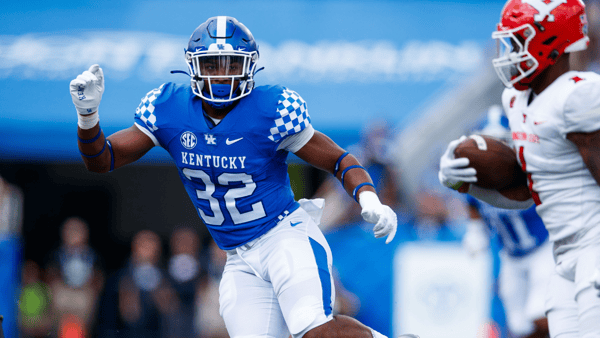
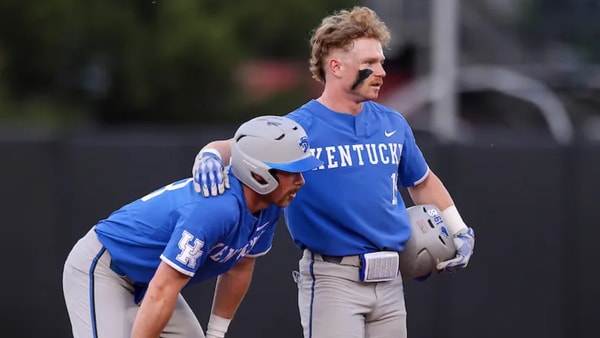
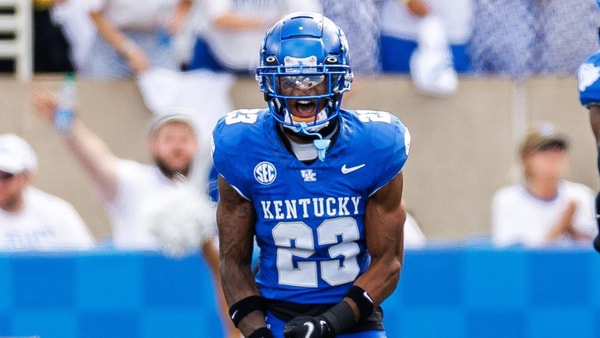
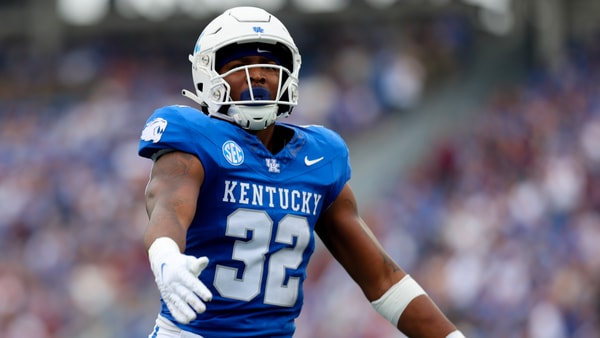
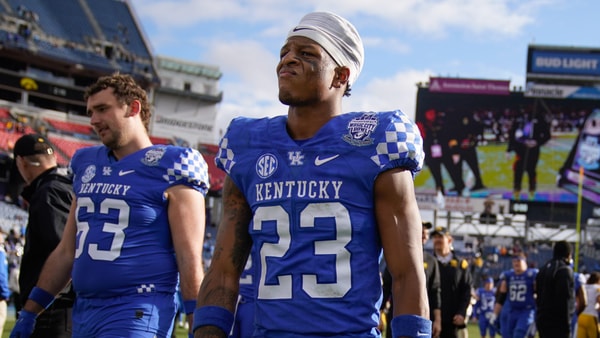
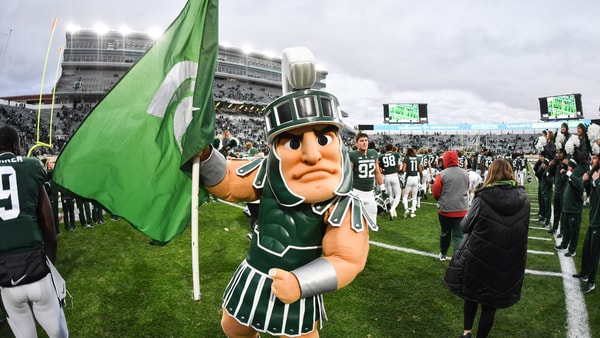

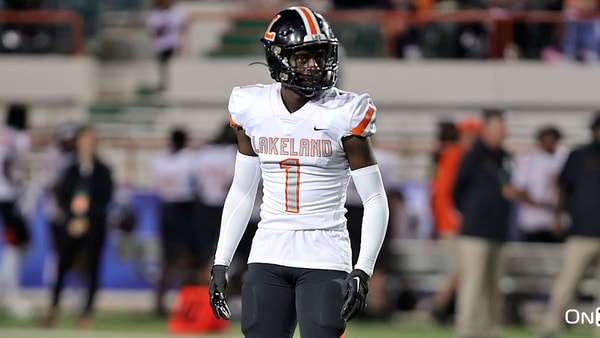
Discuss This Article
Comments have moved.
Join the conversation and talk about this article and all things Kentucky Sports in the new KSR Message Board.
KSBoard